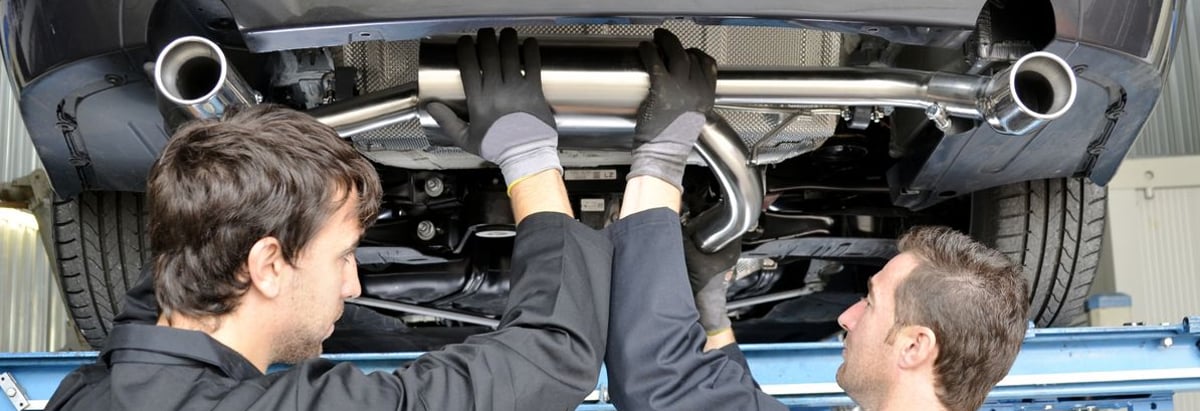Stock Analysis
- Hong Kong
- /
- Auto Components
- /
- SEHK:6830
Returns On Capital Signal Tricky Times Ahead For Huazhong In-Vehicle Holdings (HKG:6830)

If you're looking for a multi-bagger, there's a few things to keep an eye out for. Ideally, a business will show two trends; firstly a growing return on capital employed (ROCE) and secondly, an increasing amount of capital employed. If you see this, it typically means it's a company with a great business model and plenty of profitable reinvestment opportunities. In light of that, when we looked at Huazhong In-Vehicle Holdings (HKG:6830) and its ROCE trend, we weren't exactly thrilled.
Understanding Return On Capital Employed (ROCE)
For those who don't know, ROCE is a measure of a company's yearly pre-tax profit (its return), relative to the capital employed in the business. To calculate this metric for Huazhong In-Vehicle Holdings, this is the formula:
Return on Capital Employed = Earnings Before Interest and Tax (EBIT) ÷ (Total Assets - Current Liabilities)
0.0055 = CN¥11m ÷ (CN¥3.5b - CN¥1.5b) (Based on the trailing twelve months to June 2024).
Thus, Huazhong In-Vehicle Holdings has an ROCE of 0.5%. In absolute terms, that's a low return and it also under-performs the Auto Components industry average of 6.5%.
View our latest analysis for Huazhong In-Vehicle Holdings
While the past is not representative of the future, it can be helpful to know how a company has performed historically, which is why we have this chart above. If you're interested in investigating Huazhong In-Vehicle Holdings' past further, check out this free graph covering Huazhong In-Vehicle Holdings' past earnings, revenue and cash flow.
What Does the ROCE Trend For Huazhong In-Vehicle Holdings Tell Us?
On the surface, the trend of ROCE at Huazhong In-Vehicle Holdings doesn't inspire confidence. Over the last five years, returns on capital have decreased to 0.5% from 10% five years ago. Given the business is employing more capital while revenue has slipped, this is a bit concerning. This could mean that the business is losing its competitive advantage or market share, because while more money is being put into ventures, it's actually producing a lower return - "less bang for their buck" per se.
On a side note, Huazhong In-Vehicle Holdings has done well to pay down its current liabilities to 44% of total assets. So we could link some of this to the decrease in ROCE. Effectively this means their suppliers or short-term creditors are funding less of the business, which reduces some elements of risk. Some would claim this reduces the business' efficiency at generating ROCE since it is now funding more of the operations with its own money. Either way, they're still at a pretty high level, so we'd like to see them fall further if possible.
What We Can Learn From Huazhong In-Vehicle Holdings' ROCE
From the above analysis, we find it rather worrisome that returns on capital and sales for Huazhong In-Vehicle Holdings have fallen, meanwhile the business is employing more capital than it was five years ago. This could explain why the stock has sunk a total of 77% in the last five years. With underlying trends that aren't great in these areas, we'd consider looking elsewhere.
On a final note, we found 3 warning signs for Huazhong In-Vehicle Holdings (1 makes us a bit uncomfortable) you should be aware of.
While Huazhong In-Vehicle Holdings may not currently earn the highest returns, we've compiled a list of companies that currently earn more than 25% return on equity. Check out this free list here.
Valuation is complex, but we're here to simplify it.
Discover if Huazhong In-Vehicle Holdings might be undervalued or overvalued with our detailed analysis, featuring fair value estimates, potential risks, dividends, insider trades, and its financial condition.
Access Free AnalysisHave feedback on this article? Concerned about the content? Get in touch with us directly. Alternatively, email editorial-team (at) simplywallst.com.
This article by Simply Wall St is general in nature. We provide commentary based on historical data and analyst forecasts only using an unbiased methodology and our articles are not intended to be financial advice. It does not constitute a recommendation to buy or sell any stock, and does not take account of your objectives, or your financial situation. We aim to bring you long-term focused analysis driven by fundamental data. Note that our analysis may not factor in the latest price-sensitive company announcements or qualitative material. Simply Wall St has no position in any stocks mentioned.
About SEHK:6830
Huazhong In-Vehicle Holdings
An investment holding company, manufactures and sells automobile body parts in Mainland China and internationally.

